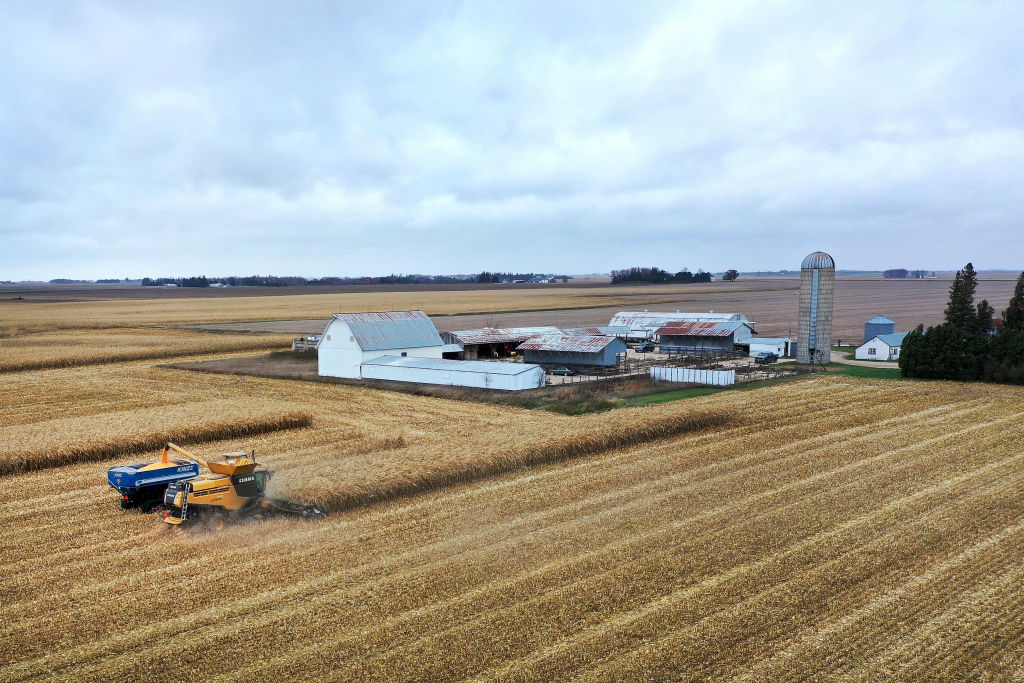A Federal Job Guarantee to Combat Geographic Inequality
November 9, 2023
By Hiba Hafiz
“A federal job guarantee would not only further critical economic development and geographic convergence goals, but it would facilitate skills strengthening and buffer vulnerable communities from economic shocks, generating real macroeconomic gains.”
Introduction
For nearly all Americans, work is the only route to economic security and mobility. But not all roads are created equal. Where you work in America matters. There is a widening gap between the richest people and places and the poorest who reside in rural and distressed urban communities. That increased geographic inequality originates less from wealth and more in work-generated income: Geographic “sorting” has concentrated high-earning jobs in some places while workers in other places have struggled with only modest earnings increases at best, generating more than half the gap in rising inequality nationally. While workers across the country struggle to access high-quality, well-paying jobs, that struggle is deeply place-specific.
For too long, economists have ignored place-based inequality, in part due to widespread adoption of a “spatial equilibrium hypothesis.” Under this neoliberal theory, market forces and perfect capital and labor mobility correct for geographic inequality: Workers move—or threaten to move—to better-paying jobs in growing cities and employers move to communities where labor costs are low. But these predictions of convergence have not materialized. In what economists have dubbed the “Great Divergence,” income and geographic inequality have increased since the late 1970s, and rural and distressed communities today have much lower average earnings (even accounting for work experience, level of education, and IQ), lower labor force participation rates, higher poverty rates, and worse health and well-being outcomes than wealthy communities.
In forthcoming research, I highlight two core contributors to these economic realities. First, employers have significant market power in rural and distressed communities based on those communities’ unique labor market characteristics—characteristics that market forces alone cannot fix. Rural and distressed labor markets are thin—they have lower numbers of buyers and sellers, which means fewer matches that are harder to find. They are more likely to be highly concentrated. Much like electric and other public utilities that operate as “natural monopolies,” many employers in rural and distressed communities operate as natural monopsonies or oligopsonies, with only one or a few employers capable of profitably operating at scale, giving them significant buyer power.1 This structural reality has left workers at the mercy of strong employers, with very limited outside options. For workers, strong employers mean lower pay, lower workplace quality, higher rates of under- and unemployment (including long-term unemployment), and higher inequality than would exist in a perfectly competitive market. These labor market effects also make rural and distressed communities less resilient to economic shocks and more vulnerable to the adverse health and well-being effects of joblessness, and provoke political polarization and feelings of resentment, disempowerment, and defeatism.
The characteristics of rural and distressed labor markets present challenges precisely because the private sector cannot or has no incentive to remedy them through competition due to the challenges diseconomies of scale present to profitability. In other words, the costs per additional unit of production of a good or service tend to be more expensive in these communities, and those higher marginal costs make it so that the more firms produce, the more costly it is, reducing profitability and the promise of efficiency gains and higher returns at scale. The only remedy, then, to this intractable problem of strong employers is some form of government intervention. But the second reason workers suffer a place-based disadvantage to good jobs has to do with regulatory—or deregulatory—response to these labor market realities. Beginning in the post-war period, and accelerating in the 1970s, federal legislation and court decisions dismantled jobs programs and social insurance programs while weakening both antitrust enforcement and labor and employment law protections. Collectively, federal labor market regulations have enabled capital mobility, corporate consolidation, and wealth transfers from increasingly captive workers with decimated on-the-job protections and fewer and fewer outside options if they leave bad employers. Our current legal landscape has thus ignored and even exacerbated workers’ unequal bargaining leverage with employers in rural and distressed communities, generating a spatial division of labor beneficial to capital at workers’ expense. Combined, these structural and regulatory features contribute to geographic inequality.
Scholars and policymakers have put forward a range of proposals to alleviate the harms of geographic inequality. From pre-labor market solutions—investment in education and training—to place-based industrial policy, housing reform, and post hoc tax-and-transfer solutions, these proposals have sought to level the playing field between workers and employers, decrease perceived skills gaps, and generate public-private partnerships to further economic development and growth in place-based ways. But no proposal has addressed the core problem of natural monopsony—the “public utility”2 character of employment—in rural and distressed communities, ignoring a fundamental source of employer power that, when left unaddressed, makes nearly impossible any achievement of fair or even competitive levels of employment, compensation, and workplace quality.
This policy brief argues that natural monopsony conditions in rural and distressed labor markets require reviving and applying a more aggressive public utility toolkit, and the most effective and efficient component of that toolkit for labor market regulation is a public option in the form of a federal job guarantee. Most importantly, a federal job guarantee is the best means of increasing worker power relative to strong employers by giving workers an outside option that ensures fair pay but also establishes uniform and consistent labor standards that raise the bar for private sector employers to compete with nationwide. A federal job guarantee would not only further critical economic development and geographic convergence goals, but it would facilitate skills strengthening and buffer vulnerable communities from economic shocks, generating real macroeconomic gains. The expansion of federal on-the-job benefits and union protections alone would generate multiplier effects in local economies. It would also provide a training ground for workers on how to exercise their collective voice on the job effectively, including by providing workers experience and expertise on negotiating and administering collective bargaining agreements. These skills are particularly crucial in communities with declining and limited, if not entirely absent, union density, enabling worker-led institution building where very few, if any, of these institutions exist. These microeconomic, macroeconomic, and socio-cultural advantages could have foundational impacts for our national welfare and, importantly, for working class empowerment.
Footnotes
1 “Monopsony” and “oligopsony” refer to the market power that one or a few firms have on the buy-side of a transaction in a relevant market (here, in the market for labor services).
2“Public utilities” are generally understood as private enterprises with natural monopoly that provide crucial services to the public, from common carrier transportation, telecommunication, energy, water, or sanitation services. See, e.g., Morgan Ricks et al., Networks, Platforms, and Utilities: Law and Policy 7 (2022).
Author
Hiba Hafiz
Hiba Hafiz is an assistant professor of law at Boston College Law School. She researches and writes in the areas of labor and employment law, antitrust law, and administrative law. Her research focuses on legal and regulatory solutions to labor market concentration, employer buyer power, and broader labor market failures, as well as improving the institutional design of labor market regulation in the administrative state. Prior to teaching at BC Law, she was a Harry A. Bigelow Teaching Fellow and Lecturer in Law at the University of Chicago Law School, where she taught Legal Research and Writing and Work Law in the New Economy.



